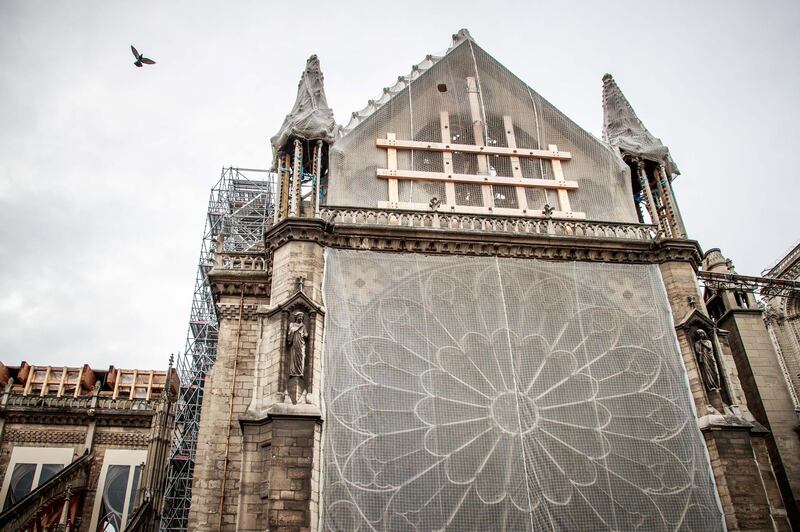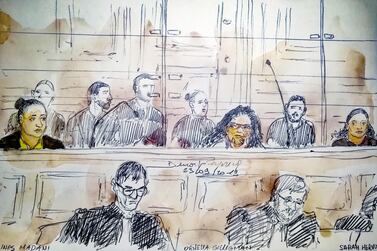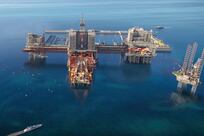Six months on from the massive fire that almost razed the Notre-Dame in Paris, restoration work at the historic cathedral has not started in earnest as engineers struggle to guarantee the structure is secure.
French Culture Minister Franck Riester said "our Notre-Dame de Paris is not yet totally saved" as he revealed that only one in €10 (Dh40) that were pledged for the reconstruction has been been handed over.
Monsignor Patrick Chauvet, the top administrative cleric of Notre-Dame, said: "We're still in the first phase, the phase of securing [the monument's structure] which is lasting longer than initially planned."
"Then there will be the second phase, dedicated to assessing the situation, we will work out how much the restoration will cost. The third phase, which will start in 2021, will be the restoration phase itself," Mr Chauvet said.
Mr Riester has said repeatedly that the work should not be rushed but is under increasing pressure to show that the project is making progress.
Mr Riester said on Tuesday that while he hoped to "give the cathedral back to the people within a reasonable delay," those involved in the restoration are "obsessed with quality".
The culture minister also cited worker safety as being one of the main reasons restoration work had not yet started.
The April 15 fire caused the roof and spire of the Gothic landmark to collapse, although the main bell towers and the outer walls were saved by firefighters, as well as religious relics and priceless artwork.
An official cause of the blaze has yet to be determined and Mr Riester refused to comment on the investigations.
When the fire broke out, maintenance work was under way on the cathedral's spire and scaffolding had been erected, The metal scaffolding poles melted in the fire. Part of the reason for the delay, officials said, was that the deformed poles had to be disentangled from the cathedral's structure.
The budget for the project also remains undecided despite colossal sums pledged to help rebuild the monument in the wake of the disaster.
Some 350,000 donors have given or pledged a total of €922 million, according to Mr Riester.
To date, the Notre-Dame Foundation has only received €104 million.
Mr Riester said the French government had not yet settled on a particular path for reconstruction.
“For us, the top priority is to do a quality restoration that captures the height of what our history represents for our country, for Paris, for the Catholic religion, for Notre-Dame,” he said.
Mr Riester promised wide consultation and debate. As head of state, Mr Macron has the final word because the French government owns Notre-Dame.
“We are determined to do things in a totally transparent manner,” Mr Riester said.
French President Emmanuel Macron in April promised the cathedral would be restored within five years, which would coincide with the 2024 Olympic Games to be held in Paris.
Mr Riester, who refused to give hard deadlines for the reconstruction effort, has dismissed the goal as a state “ambition” pushed by Mr Macron.
In the meantime, Mr Chauvet said he wanted to bring life to the esplanade in front of the cathedral so there was something for visitors to see while the building itself is off-limits.
He suggested a copy of Our Lady of the Pillar, a statue salvaged from the cathedral's interior, could be installed there.
Christophe Rousselot, general delegate of the Notre-Dame Foundation, said there were other projects in the works for the cathedral during restoration.
"We won't leave the worshippers, the tourists, behind barricades for five to seven years," he said. "We have to welcome them properly."
Mr Riester also addressed public criticism that French officials were slow to recognise the potentially harmful effects of the melted chemical lead from the cathedral’s roof that drifted into the air and onto surfaces below.
He said health officials take regular samples from areas around Notre-Dame to check for lead, and that workers on the site take appropriate precautions.
Authorities ran 877 chemical tests on people in surrounding neighbourhoods at risk of exposure to lead pollution from the fire and only 10 showed dangerously elevated levels, Mr Riester said.








